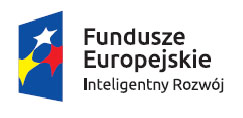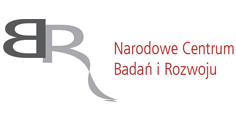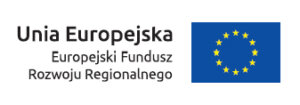
The essence and importance of collateral inventory and its implications with demand forecast errors
3 March 2022
Fuzzy sets
24 March 2022

The essence and importance of collateral inventory and its implications with demand forecast errors
3 March 2022
Fuzzy sets
24 March 2022Prospects for the application of LSTM and GRU neural networks in supply chain management

Effective supply chain management is considered one of the key elements affecting the building of market competitive advantage. A supply chain is a network that typically includes many companies working together within an industry: from suppliers of materials and components, to manufacturers, to distributors and retailers. Therefore, the supply chain should be viewed as a multi-level system, where it is beneficial to share data and operate integrated planning. Unfortunately, rarely does any chain function this way. Usually, individual links prepare their own plans and forecasts.
No matter how good the predictive model used for forecasting and planning is, 100% accuracy can never be achieved. However, the cost savings that can be achieved by continuously improving the quality of results is what separates the average company from the market leader. No matter what scale of enterprise we are talking about, the inability to accurately predict inventory is usually very costly. Lack of inventory availability results in loss of customers, revenue and margins, funds frozen in excess inventory block the capital needed to grow the company. Therefore, raising the quality of demand forecasting and inventory optimization cannot be underestimated. The world’s largest companies, are investing in analytics, especially supply chain analytics, to achieve correct demand and sales forecasts and proper inventory allocation.
To be competitive, a company must use forecasts of future demand to determine how much product to ship and to determine the capacity needed at its facilities. Further down the supply chain, another company that produces one of the components also needs forecasts to determine its production and inventory levels. For the same reason, its suppliers also need forecasts. Thus, a separate forecast is prepared at each stage of the supply chain, and these forecasts are often very different. This can result in a mismatch between supply and demand. When all stages of the supply chain work together to create a common forecast, it is much more accurate. The resulting forecast accuracy allows supply chains to be both more responsive and more efficient in serving their customers. In view of the above, it seems extremely urgent to construct a model that allows short- and medium-term demand forecasting. Undoubtedly, historical demand information can be used to forecast future demand, and such analysis affects the operation of the entire supply chain.
To predict sales, deep neural networks of the LSTM type can be used (ang. Long Short Term Memory), which allow you to fight With a short-term memory problem. This is extremely important because information is lost due to data transformations that occur as it flows through the network. Net LSTM is able to recognize and learn long-term relationships, which is used, among other things. In time series forecasting. LSTM is a variation of a recurrent neural network (ang. Recurrent Neural Network – RNN), Which can learn long-term relationships. LSTM networks, like classic dense networks, have an input layer, one or more hidden layers and an output layer. The main property of the model is contained in the hidden layer(s), which consists of memory cells. Three gates in each memory cell maintain the state of the cell: a forgetting gate, an input gate and an output gate.
LSTM networks perform well in a wide range of tasks and are the most popular type of recurrent neural network. There are many types of LSTM models that can be used for various time series forecasting tasks. In addition to the classic LSTM networks, the following are worth considering GRU networks (ang. Gated Recurrent Units). GRU is like an LSTM network with a forgetting gate, but it has fewer parameters than LSTM because it has no output gate. GRU’s performance in some music modeling tasks proved similar to that of LSTM. GRU has also been shown to have better performance on smaller and sparser datasets.
This article was written thanks to the funds from the European Union’s co-financing of the Operational Program Intelligent Development 2014-2020, a project implemented under the competition of the National Center for Research and Development: under the “Fast Track” competition for micro, small and medium-sized entrepreneurs – competition for projects from less developed regions under Measure 1.1: R&D projects of enterprises Sub-measure 1.1.1 Industrial research and development work carried out by enterprises. Project title: “Developing software to improve forecast accuracy and inventory optimization from the perspective of customer and supplier collaborating in the supply chain using fuzzy deep neural networks.




LAST UPDATES
TAGS
- #AI
- #artificial-intelligence-from-A-to-Z
- #bullwhip-effect
- #covid19
- #demand-forecasting
- #forecasting
- #Intelligent-Development-Operational-Program-2014-2020.
- #inventory-management
- #inventory-optimization
- #NCBiR
- #neural-networks
- #out-of-stock
- #outllier
- #overstock
- #safety-stock
- #safety-stock
- #seasonal-stock
- #service-level-suppliers
- #stock-projection
- #stock-projection-over-time
- #supply-chain
- #supplychain
Related entries
How about AI: what is it and how does artificial intelligence work?
READ
Artificial intelligence (AI) is the ability of machines to exhibit human skills such as learning, inference and recommending solutions. Artificial intelligence enables associations to be made […]
The essence of the classic model of inventory renewal based on the information level – the point of reordering
READ
The main feature of the model based on the so-called. “ordering point,” also known as an information-level ordering system or continuous review [3], is a condition […]
Fuzzy systems
READ
Based on fuzzy sets, a fuzzy inference system can be built. In such a system, fuzzy rules are implemented for modeling, which in turn make it possible to carry out the process of fuzzy inference.


